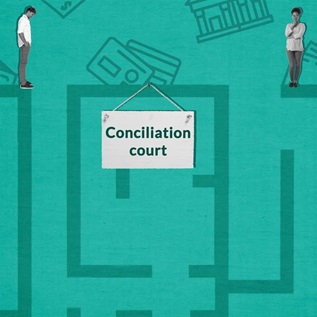Still Waiting
‘Unfair or Deceptive' Credit Card Practices Continue as Americans Wait for New Reforms to Take Effect
QUICK SUMMARY
This report presents Pew's findings about the state of the credit card market on the eve of significant new federal regulations designed to eliminate unfair or deceptive practices and foster safer and more transparent products.
Congress has passed sweeping new legislation aimed at making credit cards safer and more transparent, but Americans are still waiting for the new law to protect them. Although the president signed the Credit CARD Act of 2009 last May, most parts of the bill will not take effect until February of 2010 or later. The new legislation came in the wake of last year's Federal Reserve Board determination that certain practices in the credit card industry were “unfair or deceptive” to consumers, and it targets many of those practices.
In July 2009, the Pew Health Group began a new study to evaluate how widespread these practices were and to identify trends since our last review in December of 2008. Our research included an examination of nearly 400 credit cards, including all consumer credit cards offered online by the largest 12 bank issuers in America. These banks control more than 90 percent of outstanding credit card debt nationwide.
We found that median advertised interest rates on bank credit cards were between 13 and 23 percent higher compared to rates in December of 2008, depending on a consumer's credit profile. Meanwhile, practices labeled “unfair or deceptive” by the Federal Reserve remained as widespread as they were before Congress passed the new credit card law. In fact, some of these practices had become even more common. In sum, all surveyed bank cards included at least one “unfair or deceptive” practice. None of these cards would have met the requirements of the Credit CARD Act.
Our recent review includes, for the first time, credit unions. Although the largest 12 credit unions control only 1 percent of overall credit card lending, many consumers will find it helpful to know that these credit unions offered prices that were generally lower compared to those of the largest banks. Also, because credit union penalty charges were both less frequent and less severe than those of banks, their cards may be useful benchmarks as the Federal Reserve creates new “reasonable and proportional” penalty rules, as required under the Credit CARD Act.
REPORT CONTENT
SUMMARY OF FINDINGS
This report, based on our latest research of nearly 400 credit cards offered by the largest 12 bank and largest 12 credit union issuers, shows the following:
1. The largest 12 banks used practices deemed “unfair or deceptive” under Federal Reserve guidelines. None of these bank issued cards would meet the requirements of the Credit CARD Act of 2009.
- 99.7 percent of bank cards allowed the issuer to raise interest rates on outstanding balances by changing the account agreement unilaterally—up from 93 percent in December 2008.
- 90 percent of bank cards had penalty interest rates that could be triggered by late payments or overlimit transactions. All but 10 percent of these cards had penalty repricing terms that would qualify as “hair trigger” under Federal Reserve guidelines (triggers of one or two late payments in 12 months).
- 95 percent of bank cards allowed issuers to apply payments in a manner that the Federal Reserve found likely to cause substantial monetary injury to consumers. The other 5 percent did not disclose the issuer's policy.
In addition, a new trend is emerging as bank issuers move away from fixed rate cards. More cards now feature partially variable interest rates with fixed minimum rate requirements. Rates on these cards will go up when third-party index rates rise but cannot decrease below a fixed minimum set by the issuer.
2. As the Federal Reserve prepares new rules for “reasonable and proportional” penalties under the Act, banks continue to charge substantial penalty rates and fees.
Starting in August 2010, the Credit CARD Act will require penalty fees and charges to be “reasonable and proportional” to the “acts or omissions” of cardholders, based on rules the Federal Reserve will establish. Meanwhile, penalty rates and fees have remained mostly unchanged since Congress passed the new law:
- 99 percent of bank cards included a late fee (median $39).
- 80 percent of bank cards included an overlimit fee (median $39).
- The median bank penalty interest rate was 28.99 percent. Most (90 percent) penalty rate increases could continue indefinitely even if the cardholder resumes on-time payments.
Whether current levels of penalty fees and charges meet the new law's “reasonable and proportional” requirement will depend on rules the Federal Reserve is currently developing. Relevant factors may include how large the penalty is compared to the monthly required minimum payment or how long penalty rate increases may apply once cardholders return to on-time payment behavior.
3. Advertised rates compared to bank credit cards, with penalty fees that were half the cost of comparable bank fees and fewer dangers associated with “unfair or deceptive” practices.
The observed credit unions presented a distinct alternative to credit card pricing and other practices of the observed banks. In July 2009, median advertised interest rates on cards from the 12 largest credit unions were between 9.90 and 13.75 percent annually, depending on a consumer's credit profile—approximately 20 percent lower than comparable bank rates. Meanwhile, credit union penalties were generally less severe than those of banks.
- 99 percent of credit union cards included a late fee (median $20).
- 89 percent of credit union cards included an overlimit fee (median $20).
- The median credit union penalty interest rate was 17.90 percent. These penalties were less likely to last indefinitely (one-third of penalties would terminate after 3 to 12 months of on-time payments) compared to those of banks.
Like bank cards, the vast majority of credit union cards included terms allowing the issuer to change any rates or terms at any time, or take other actions that the Credit CARD Act will eventually prohibit. However, compared to bank cards, credit union cards more closely complied with guidelines against “unfair or deceptive” practices that the Federal Reserve developed last year. For example, nearly half of the credit union cards included no penalty rates at all, and more than three-quarters of those that did have penalty rates would have met the Federal Reserve's fairness rules.
KEY POLICY RECOMMENDATIONS
The Credit CARD Act of 2009 provides many important consumer protections. While some new disclosure rules became effective in August 2009, most substantive protections will not take effect until February of 2010 or later. Until then, banks may continue to raise rates on outstanding balances, use what the Federal Reserve labeled “hair trigger” penalty rate increases, apply payments in a way that maximizes interest costs, charge unrestricted overlimit fees and more.
Some banks have recently announced plans to discontinue overlimit fees, end mandatory arbitration programs or make other changes. However, more needs to be done to achieve the vision of safer and more transparent products that underpins recent legal developments. Congress is considering a new bill to accelerate the implementation date of the Credit CARD Act of 2009. Our research supports implementing the Act's core safeguards against retroactive interest rate increases and other costly practices immediately.
Going forward, bank regulators have a crucial role to play in ensuring the goals of the Act are met. In particular, the Federal Reserve is responsible for creating new rules to ensure that all penalty fees and charges are “reasonable and proportional.”
Based on our latest research, and the Safe Credit Card Standards we developed after more than a year of analysis and dialogue with industry and consumer groups, we make the following key recommendations:
1. Congress should act to ensure rapid implementation of the core protections against “unfair or deceptive” practices found in the Credit CARD Act of 2009.
2. The Federal Reserve should regulate penalty interest rate increases, as well as fees, in its rules governing “reasonable and proportional” penalty charges under the Credit CARD Act.
- Regulators should provide consumers a guaranteed right to “cure” penalty rates, restoring original non-penalty rates after six months of on-time payment whether repayment begins immediately or in later billing cycles.
- Regulators should limit penalty interest rate increases to a maximum of seven percentage points above the non-penalty rate of interest.
3. The Federal Reserve should prohibit all credit card penalties that do not further the Act's goals of improving price transparency and protecting consumers from unfair, misleading or deceptive practices. Specifically,
- Late fees should be judged in proportion to the amount that is past due, not the overall account balance.
- Late fees that may apply immediately on the payment due date should be closely scrutinized for adherence to factors identified in the Act (cost, deterrence and cardholder conduct).
- Overlimit fees should be prohibited because they cannot be justified based on the factors identified in the Act. At a minimum, overlimit fees should be restrained significantly in terms of cost and when they may apply.
4. Bank regulators should scrutinize partially variable rates, which rise with changes in an index but cannot fall below a fixed minimum set by the issuer. Cards with partially variable rates including minimum rate requirements should not be eligible for exemptions to certain notice and interest rate rules under the Act, which were created for true variable rates.
Much of the data discussed in this report is summarized in the appendices.












